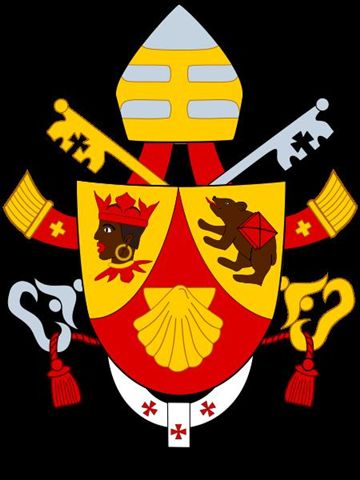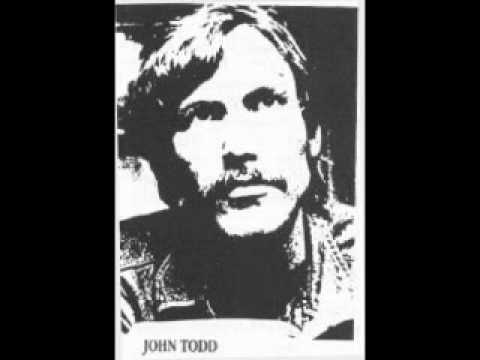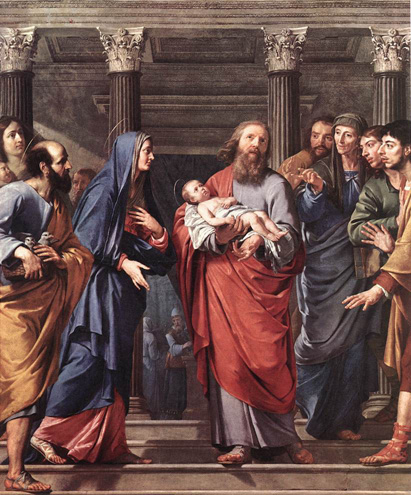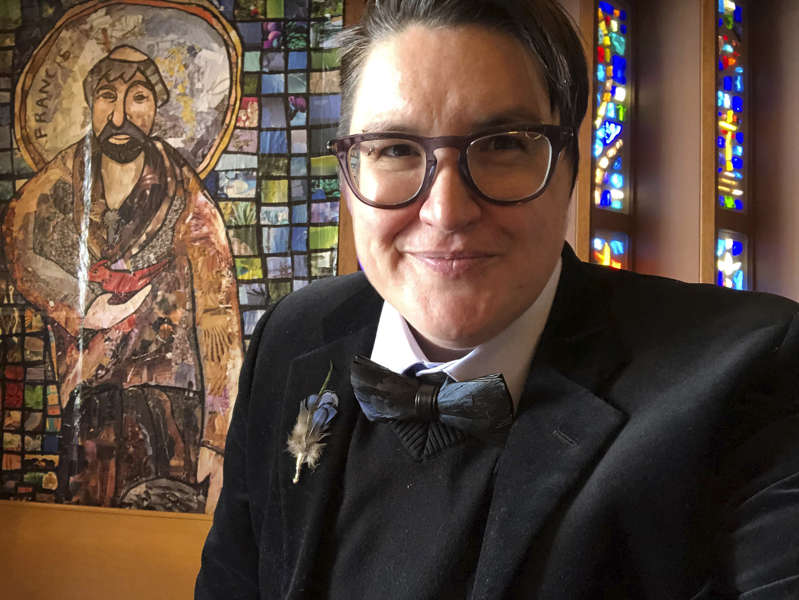“And when the builders laid the foundation of the temple of the Lord, they set the priests in their apparel with trumpets, and the Levites the sons of Asaph with cymbals, to praise the Lord, after the ordinance of David king of Israel.
“And they sang together by course in praising and giving thanks unto to the Lord; because He is good, for His mercy endureth for ever towards Israel.”
Ezra 3:10-11
What Roman Catholics Really Believe: The Annunciation
On March 25, Roman Catholics celebrate what they call the Feast of the Annunciation. A Practical Catholic Dictionary defines the Annunciation as:
“The announcement of the Angel Gabriel to the Blessed Virgin Mary that she was to be the mother of Jesus Christ. The angel greeted Mary with the words, ‘Hail, full of grace, the Lord is with thee. Blessed art thou among women.’ Mary did not understand this strange greeting. The angel said, ‘Do not be afraid, Mary, for thou hast found grace with God.’ He told her that she was to have a son whom she was to name Jesus. ‘He shall be great and shall be called the Son of the Most High; and the Lord God will give Him the throne of David His father, and He shall be king over the house of Jacob forever, and of His kingdom there shall be no end.’
“Mary knew that one of the prophecies concerning the Messias was that he was to come from the race of David. Still troubled at the angel’s words, she asked him how these things would be possible. The Angel Gabriel answered, ‘The Holy Spirit shall come upon the; and therefore the Holy One to be born shall be called the Son of God. Mary freely accepted God’s will when she said, ‘Behold the handmaid of the Lord; be it done to me according to thy word,’ Luke I 28-38.
“The Feast of the Annunciation is celebrated March 25 and is one of the principle feasts of Our Lady. If March 25 occurs in Holy Week or Easter Week, the celebration is transferred to the Monday after Low Sunday. The first Joyful Mystery of the Rosary is the Annunciation.”
A Practical Catholic Dictionary, p. 23
This is yet another proof that the Roman Catholic Virgin Mary is not the mother of the Lord Jesus Christ, but another Mary. According to the Holy Bible, the Angel Gabriel neither called Mary, the mother of Jesus, “full of grace” nor told her that she had found grace with God. This is the dialogue according to the King James Bible:
“And in the sixth month the angel Gabriel was sent from God unto a city of Galilee, named Nazareth, to a virgin espoused to a man whose name was Joseph, of the house of David; and the virgin’s name was Mary. And the angel came in unto her, and said, hail, thou that art highly favoured, the Lord is with thee: blessed art thou among women. And when she saw him, she was troubled at his saying, and cast in her mind what manner of salutation this should be.
“And the angel said unto her, Fear not, Mary: for thou hast found favour with God. And, behold, thou shalt conceive in thy womb, and bring forth a son, and shalt call his name JESUS. He shall be great, and shall be called the Son of the Highest, and the Lord God shall give Him the throne of His father David: And he shall reign over the house of Jacob for ever; and of His kingdom there shall be no end.
“Then said Mary unto the angel, How shall this be, seeing I know not a man? And the angel answered and said unto her, The Holy Ghost shall come upon thee, and the power of the Highest shall overshadow thee; therefore also that holy thing which shall be born of thee shall be called the Son of God.”
Luke 1:26-35
According to the King James, the angel Gabriel rather than greet the mother of Jesus with “Hail full of grace,” greeted her with “Hail thou that art highly favored.” Now this may not seem like much of a distinction to nominal Christians, but to Roman Catholics and Protestants, it is very important.
You see, Roman Catholics believe in the Immaculate Conception: the doctrine the Virgin Mary was not born with original sin like all other humans (except the Lord Jesus). They believe that the angel Gabriel greeted her with with “Hail, Mary, full of grace” because was she was sinless, and therefore deserved the honor to give birth to the Lord Jesus. Catholics are taught that the Virgin Mary is a “channel of grace,” and that she can impart this grace to Catholics provided they keep the seven Sacraments. When a Catholic keeps the Sacraments, he is said to be in a “state of grace.”
Protestants know that that according to the Bible, Mary, the mother of our Lord was a sinner, like we are. It was not because of any special holiness on her part, that God selected her to be the mother of our Savior. Neither Mary nor the Virgin Mary can impart to grace to anyone. Only God can impart grace.
The Annunciation, like everything else in Roman Catholicism, has a pagan origin. The learned historian Alexander Hislop says this:
“Before our Lord was either conceived or born, that very day set down in the Popish calender for the ‘Annunciation of the Virgin’ was observed in pagan Rome in honor of Cebele, the Mother of the Babylonian Messiah.”
The Two Babylons, p. 102
And, in case you doubt that Cebele is the Virgin Mary, Hislop says this:
“The common title of Cebele at Rome was Domina, or “the Lady.”
The Two Babylons, p. 103
Cebele is another name of Semiramis, the wife of the great rebel, Nimrod. At Babylon, as in Rome, Semiramis was called Beltis: literally The Lady.
Waco Massacre 30th Anniversary
Today is the thirtieth anniversary of the Waco Massacre, when the Branch Davidian church were killed by agents of the federal government.
The Branch Davidians were a religious group that was an offshoot of the Seventh Day Adventist Church. Led by David Koresh, the Davidians lived and worshipped at Mount Carmel, a ranch located near Waco, Texas. On February 28, 1993, the Bureau of Alcohol, Tobacco, and Firearms (ATF) raided Mount Carmel, supposedly to serve Koresh a warrant. Four ATF agents and six Branch Davidians were killed in the raid. The FBI then took over and began a 51-day siege of Mount Carmel which culminated on April 19, 1993 when the church was burned to the ground. 80 Branch Davidians were killed.
Lest we forget.
Even He is the Eighth
The prophetic significance of Pope Benedict XVI’s death cannot be which overstated, as it is the catalyst for a number of events, chief among which is his resurrection. Some of the you may be aware that I believe that the Pope Emeritus Benedict XVI and Pope Francis are the Antichrist and the False Prophet, respectively.
I first made this contention in 2011 in a article entitled The Identity of the Antichrist wherein I give evidence to prove beliefs my concerning Pope Benedict XVI. In 2015, I restated my beliefs in a YouTube video discussing the Mark of the Beast from Revelation Chapter 13.
The death the Pope Benedict was prophetic, just like his resignation and the subsequent inauguration of Pope Francis was prophetic. As I explained in The Mark the Beast, Pope Benedict resigned to bring to pass the Bible’s testimony regarding the Roman Catholic Church being run by two Popes:
“And I stood upon the sand of sea, and saw a beast rise up out of the sea, having seven heads and ten horns, and upon horns ten crowns, and upon his heads, the name of blasphemy.”
Revelation 13:1,3
The first beast is the Antichrist, Pope Benedict XVI.
“And I beheld another beast coming up out of the earth; and he had two horns like a lamb, and he spake like a dragon. And he exerciseth all the power of the first beast before him…”
Revelation 13:11
The second beast is the False Prophet, Pope Francis. Rather than exercising the power of Pope Benedict “before” (in front of) him (as some believe), Pope Francis, as the new Bishop of Rome, exercises all of power of Pope Benedict, his predecessor.
The next on the prophetic timetable is for Pope Benedict XVI to die. This was accomplished Saturday:
“And I saw one of his [the Antichrist’s] heads as it were wounded death…”
Revelation 13:3a
Next, if I understand my Bible correctly, Pope Benedict has to miraculously return from the dead:
“[A]nd his deadly wound was healed: and all the world wondered after the beast.”
Revelation 13:3b
After his “resurrection,” Pope Francis will command the world to recognize Pope Benedict as Christ. After all, he did rise from the dead:
“[And he] causeth the earth and them which dwell therein to worship the first beast, whose deadly wound was healed.”
The Bible does not say the Antichrist will rise on the third day, but if he seems to suggest he will resurrected:
“And there are seven kings: five are fallen, and one is, and the other is not yet come; and when cometh, he must continue a short space. And the beast that was, and is not, even he is the eighth, and is of the seven, and goeth into perdition.”
Revelation 17:10-11
Of the seven kings, five are dead, so the passage is really talking about two kings. In that the previous passage talks of the seven-headed of Revelation 13, these two kings are the Antichrist and the False Prophet. The beast that was, and is not, therefore, is Pope Benedict XVI.
He is the eighth, but he is also the sixth (as five of them are dead). At the time of this prophecy, the seventh king (Pope Francis) is not yet come, but when he comes, he only be in power for a few years, because the sixth king (Pope Benedict XVI) will die and be “resurrected.” As the eighth king (eight is the number of resurrection or new beginnings), Pope Benedict will the rule the world as the Christ.
The Vatican announced it will hold a wake Monday to give the public a chance “to say goodbye” to the late pontiff. The funeral is to be held on Thursday. Prophetically speaking, the next few days will be very important.
Pope Benedict XVI Dead
St. Bartholomew’s Day Massacre
On August 24, 1572, the Roman Catholics of France murdered Admiral Gaspard de Coligny along with 30,000 other Huguenots (French Protestants). Over 70,000 were butchered in the provinces. That day of infamy is now known as the St. Bartholomew’s Day Massacre.
“Precious in the sight of the Lord is the death of His saints” (Psalms 116:15).
Source: Engineer Corps of Hell, p. 22.
Testimony of John Todd
John Todd was a former high-level Druid witch, who was saved by the blood of Jesus Christ. Todd assisted the late Seventh-Day Adventist publisher Jack Chick in the production of several comic book tracts such as The Broken Cross. Many Christians have expressed doubt regarding Mr. Todd’s conversion, and don’t think it appropriate to reference his testimony. But, in that the witchcraft worldview is being promoted by Hollywood and in the media, and is being taught to our children in school, it is incumbent upon the body of Christ to understand what witches believe.
DISCLAIMER: I do not agree with all of Todd’s doctrinal views (for example his belief in a Rapture, or that the Mark of the Beast will not be an actual physical mark), but his testimony confirms many things I have observed, but never heard spoken of by established Protestant sources. Most importantly, Todd emphasizes the fact that Christian children are targeted by the Occult, and many have succumbed. This is especially true for many of us in the ministry.
Podcast: Play in new window | Download
Subscribe: RSS
Pope Francis Consecrates Russia and Ukraine to Virgin Mary
What’s up with Arizona?
Remember Waco
The Branch Davidians were a religous group that was an offshoot of the Seventh Day Adventist Church. Led by David Koresh, the Davidians lived and worshipped at Mount Carmel, a ranch located near Waco, Texas. On February 28, 1993, the Bureau of Alcohol, Tobacco, and Firearms (ATF) raided Mount Carmel, supposedly to serve Koresh a warrant. Four ATF agents and six Branch Davidians were killed in the raid. The FBI then took over and began a 51-day siege of Mount Carmel which culminated on April 19, 1993 when the church was burned to the ground. 80 Branch Davidians were killed.
Watch the following videos as many times as necessary in the coming weeks, so your heart will be in the right place on April 19, the anniversary of the Waco Massacre. Lest we forget.
Waco, The Big Lie
Waco: The Rules of Engagement
In The Coils: Or The Coming Conflict
We’ve added a new book to the Bibliography, called In the Coils: Or the Coming Conflict. This wonderful work of historical fiction centers on the life of a prominent and successful doctor and his family in an unnamed town in the Midwest, and his conflicts with the powerful forces of Freemasonry that control that town. The book was written shortly after the disappearance and presumed murder of Captain William Morgan, who in 1826 published a book called Illustrations of Freemasonry, allegedly exposing the secrets of the Craft. Due to the shock and horror that seized the public following the disappearance of Morgan, a popular movement against Freemasonry began that by some accounts led over 90% of the Freemasons in America to renounce the Lodge.
In the Coils does not delve deeply into the Morgan controversy, but it perfectly captures the sentiment that prevailed at that time, and is the backdrop of the love story that is at the heart of this work. It also cites books and provides quotes by prominent Freemasons, which clearly illustrate the true nature of the Craft. Many of these works are very difficult or impossible to find now.
In the Coils also offers a rare glimpse of the American ideal that is seldom seen in contemporary literature.
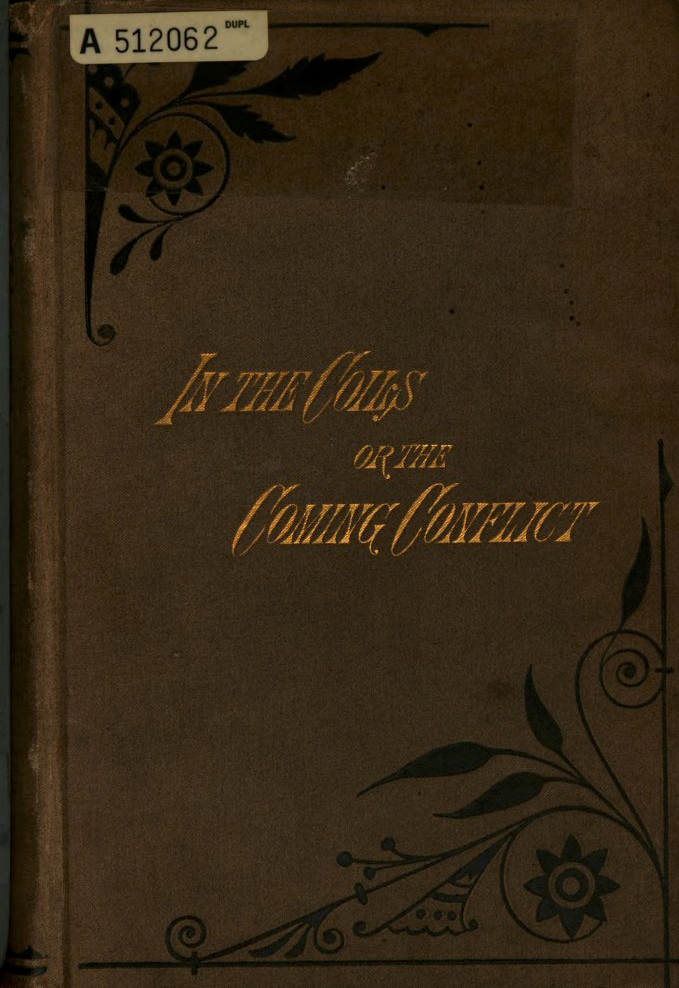
What Roman Catholics Really Believe: The Purification of the Virgin Mary
February 2nd marks the celebration of the Roman Catholic feast day known as the Purification of the Blessed Virgin Mary, also called the Purification of Our Lady, Feast of the Presentation of Christ in the Temple, or, as it is known in Germany, Candlemas. First instituted by Pope Sergius I, this holiday is based on the Roman Catholic belief that the Virgin Mary, after the birth of the Lord Jesus, went to the Jewish temple at Jerusalem to be purified and to present the child Jesus to the Lord God.
A Practical Catholic Dictionary explains it thus:
“This feast is in memory of Our Lady’s purification in the Temple after the birth of Jesus. According to the Jewish law, a mother, after the birth of a child, went to the Temple to present the child and to be purified after childbirth. The Presentation in the Temple is commemorated in the fourth Joyful Mystery of the Rosary. The Feast of the Purification is also called Candlemas Day.” A Practical Catholic Dictionary, p. 179
Purification was done in obedience to the law of Moses:
“If a woman have conceived seed, and born a man child: then she shall be unclean seven days; according to the days of the separation for her infirmity shall she be unclean. And in the eighth day the flesh of his [the child’s] foreskin shall be circumcised. And she shall then continue in the blood of her purifying three and thirty days; she shall touch no hallowed thing, nor come into the sanctuary, until the days of her purifying be fulfilled. “And when the days of her purifying are fulfilled, for a son, or for a daughter, she shall bring a lamb of the first year for a burnt offering, and a young pigeon, or a turtledove for a sin offering, unto the door of the tabernacle of the congregation, unto the priest: Who shall offer it before the Lord, and make atonement for her: and she shall be cleansed from the issue of her blood. This is the law of her that hath born a male or a female.” Leviticus 12:2-4, 6-7
According to this passage, purification involved both a physical component and a spiritual component. The physical component was a period of thirty-three days following the birth of a child, during which time a woman’s blood flow cleansed her of afterbirth. The spiritual component involved the woman making a sin offering in order to atone for her sins. The physical component was accomplished at home, whereas the spiritual component was accomplished at the temple in Jerusalem.
Because a woman’s purification had to be accomplished before she made her sin offering (Leviticus 12:6), Mary, the mother of Jesus, would not have gone to the temple to be purified; but, in fact, would have been purified before she even went to Jerusalem. Moreover, as during her purification, a woman was not allowed to enter the sanctuary, or touch any sacred thing, Mary would not have even been allowed to enter the temple, much less offer a sacrifice, a thing hallowed unto the Lord.
The fact that she was not only allowed into the temple, but, did, in fact, make a sin sacrifice, could only mean that when Mary went to Jerusalem, her purification had already been completed. The Bible confirms this:
“When the days of her [Mary’s] purification according to the law of Moses were accomplished, they brought Him [Jesus] to Jerusalem to present Him to the Lord and to offer a sacrifice according to that which is said in the law of the Lord, A pair of turtle doves, or two young pigeons.” Luke 2:22,24
It is clear from the Bible that Mary the mother of Jesus, went to the temple to offer a sin sacrifice, and the time of her purification had already been accomplished. Why, then, does the Roman Catholic Church teach that the Virgin Mary went to the temple to be purified? I believe it is to bolster the Roman Catholic doctrine of the Immaculate Conception, the belief that the Virgin Mary was born without original sin.
A Practical Catholic Dictionary defines the Immaculate Conception as:
“The privilege by which the Blessed Virgin was free from original sin from the very moment of her conception. Her soul was filled with sanctifying grace at its creation. The word immaculate means free from any stain, that is, perfectly pure. The Blessed Virgin Mary was perfectly pure from her first moment of being. The Feast of the Immaculate Conception is December 8 and is a holiday of obligation in most countries. Our Lady Immaculate is the patron saint of the United States of America. The Immaculate Conception, which refers entirely to Our Lady, should not be confused with the Virgin Birth. See Virgin Birth.” A Practical Catholic Dictionary, p. 118
The Roman Catholic Church says that the Virgin Mary is the biblical Mary, the mother of Jesus; yet the doctrine of the Immaculate Conception cannot be reconciled with the Bible’s testimony that Mary, the mother of Jesus considered herself a sinner. If the Virgin Mary and the biblical Mary are the same person, then either the Roman Catholic Church is wrong, or the Bible is wrong. If, however, the Virgin Mary and Mary, the mother of Jesus, are not the same person, then the doctrine of the Immaculate Conception makes perfect sense, because the Virgin Mary is an idol of stone, and an idol of stone cannot sin.
Two Marys
Proof that the Roman Catholic Church knows that the Virgin Mary and the biblical Mary are not the same person is the fact that they distinguish the Immaculate Conception from the Virgin Birth, stating unequivocally that the Immaculate Conception “refers entirely to Our Lady” and “should not be confused with the Virgin Birth.”
This is a highly enlightening statement indeed; for if the Virgin Mary and Mary, the mother of Jesus were the same person, then it would neither be necessary to distinguish Our Lady (the Virgin Mary) from Mary, the mother of Jesus, nor to distinguish the Immaculate Conception from the Virgin Birth. That the Roman Catholic Church has done both should cause any thinking person to at least consider that the Virgin Mary and Mary, the mother of the Lord Jesus are not the same person.
Further proof that the Roman Catholic Church knows that the Virgin Mary is not Mary, the mother of Jesus can be found by examining A Practical Catholic Dictionary’s definition of the Virgin Birth:
“Jesus Christ’s birth of Mary who was a virgin. Christ had no human father, and He was conceived by the Holy Ghost in the womb of His virgin mother. Mary was a virgin before the birth of her Divine Son, at the time of His birth, and after His birth. The brothers and sisters of Christ mentioned in the Gospels are merely relatives.” A Practical Catholic Dictionary, p. 220.Note that the biblical Mary is called “Mary, who was a virgin” rather than the Virgin Mary or Our Lady. Again, this is done to distinguish the Roman Catholic Virgin Mary from Mary, the mother of Jesus. It is significant that the Roman Catholic Church is making this distinction, and not the Protestant Church. However, after making this distinction, the Roman Catholic Church implies that the Virgin Mary and the biblical Mary are the same person by stating that Mary was a virgin before the birth of Jesus and thereafter. (It should be noted that the Virgin Mary is known as “Ever Virgin.”) Incredibly, to bolster their claim, they go so far as to add that the brothers and sisters of the Lord Jesus mentioned in the Bible are “merely relatives!” This is calling the Word of God a lie, and God a liar, because the Bible is clear that the Lord Jesus had brothers and sisters:
“Is not this the carpenter’s son? Is not his mother called Mary? And his brethren, James, and Joses, and Simon, and Judas? And His sisters, are they not all with us?” Matthew 13:55-56
Again, note that Jesus’ mother is called Mary and not the Virgin Mary, clearly suggesting that the two are not the same person. The fact that the passage uses the words brethren (brothers) and sisters clearly means that James, Joses, Simon, and Judas were Jesus’ siblings and not mere relatives. Moreover, the Apostle Paul, illustrating the liberty that we have in Christ Jesus, writes:
“Have we not power to lead about a sister, a wife, as well as other apostles, and as the brethren of the Lord, and Cephas?” 1 Corinthians 9:5
Not only did the Lord Jesus have brothers, but they were all married (as was the Apostle Peter, who was called Cephas). As a Bible-believing Christian, I believe the Bible’s testimony that Mary, the mother of Jesus, knew she was a sinner, and offered a sin sacrifice in accordance with the law of Moses. I also believe that the Lord Jesus had brothers and sisters, so His mother did not remain a virgin after the Lord’s birth. I therefore cannot accept the doctrine of the Immaculate Conception with regard to Mary, the mother of Jesus. I can, however, accept the doctrine of the Immaculate Conception with regard to the Roman Catholic Virgin Mary, because the Virgin Mary is an idol of stone; and an idol of stone cannot sin.
The Roman Catholic Church claims to be infallible, so it would never abandon a doctrine so central to its existence as the doctrine of the Immaculate Conception, simply because it does not agree with the Bible. What it would do, however, and, in fact, has done, is make the Virgin Mary appear to be the same person as Mary, the mother of Jesus. This is the purpose of the Purification: to change the circumstances of Mary’s visit to the temple in order to support the unbiblical doctrine of the Immaculate Conception. This is because virtually all doctrines concerning the Virgin Mary hang on the Immaculate Conception, especially the doctrine that the Virgin Mary is Co-Redeemer and Mediatrix with the Lord Jesus.
The doctrine of the Purification is further proof that the Virgin Mary is not Mary, the mother of the Lord Jesus Christ, but another Mary. The Bible calls this other Mary the “Virgin Daughter of Babylon” and the “Lady of Kingdoms” (Isaiah 47:1,5).
“Let every man be fully persuaded in his own mind.”
Be encouraged and look up, for your redemption draweth nigh.
The Still Man
He Said/She Said – January 2, 2022
What Roman Catholics Really Believe: Advent Denies That Jesus Is The Christ
We are now in the season known to Roman Catholics as Advent. I had never heard of Advent until I went to live in Munich, Germany, where I was told that Advent is a celebration of Christ’s second coming. His first coming, I was told, was the First Advent; and Advent celebrates His Second Coming.
Secular sources describe Advent thus:
Christ’s second coming on earth, on Judgment Day: also called Second Advent.
Websters Universal Unabridged Dictionary
1. The birth of Christ.
2. The Second Advent. See Second Coming.
Second Coming: The return of Christ as judge upon the last day; milliennium. Also called “Second Advent.”
American Heritage Dictionary of the English Language
2. The coming of Christ into the world.
3. The penitential period beginning four Sundays before Christmas, commemorating this.
4. (usually Cap.) See Second Coming.
Second Coming: The coming of Christ on Judgment Day.
Random House College Dictionary
The principle problem with these definitions is that they all purport that the Lord Jesus will return on Judgment Day, when in fact, according to the Holy Bible, the Lord will return on the last day of the Great Tribulation. Judgment Day, as anyone who reads and understands his Bible knows, will occur after the thousand-year reign of the Lord Jesus Christ on earth.
But there are greater problems with Advent, which are revealed by the Roman Catholic Church’s definition of Advent:
“The season or time of year leading up to Christmas. The word advent means coming, and during Advent we are waiting for the coming of Jesus Christ. Advent begins on the Sunday nearest St. Andrews Day, November 30, and ends at midnight, December 24. The first Sunday of Advent is the first day of the ecclesiastical year. See year, ecclesiastical.
Advent is the first liturgical season of the Church calendar. During Advent the Church, through its prayers, Gospels, etc. shows the Jewish world waiting for the Messias, the Redeemer who was to save man from his sins. Advent is a period of penance, though not so much a period of penance as Lent. The Redeemer has not yet come, and only by penance, can the way be prepared for Him.”
A Practical Catholic Dictionary, p. 16
It is important to understand that A Practical Catholic Dictionary has the imprimatur of Francis Cardinal Spellman, at the time the archbishop of New York, and the highest Roman Catholic in America. This means that it has the approval of the Vatican, and its views are considered accurate by the Roman Catholic Church.That Roman Catholics are “waiting for the coming of Jesus Christ” either implies that they don’t believe He came, or that He came, but didn’t redeem mankind. That the Roman Catholic Church believes “the Redeemer has not yet come” would seem to imply that the latter is the case. If the Redeemer has not yet come, then God is a liar, for His Word says that the Lord Jesus is the Redeemer:
“And they sung a new song, saying, Thou [the Lord Jesus] art worthy to take the book, and to open the seals thereof: for thou wast slain, and hast redeemed us to God by thy blood out of every kindred, and tongue, and people, and nation…”
Revelation 5:9
“Christ has redeemed us from the curse of the law, being made a curse for us; for it is written cursed is every one that hangeth on a tree.”
Galatians 3:13
“Looking for that blessed hope, and the glorious appearing of the great God and our Savior Jesus Christ; Who gave Himself for us, that He might redeem us from all iniquity, and purify unto Himself a peculiar people, zealous of good works.”
Titus 13-14
To say that the Redeemer has not yet come is to deny that Jesus was the Redeemer. And to deny that Jesus was the Redeemer is to deny that Jesus is the Christ. This is blasphemy.
It is not strange that the Roman Catholic Church would say that the Lord Jesus is not the Redeemer, as the Roman Catholic Sacrament of Penance denies the Atonement of the Lord Jesus. Moreover, Pope Francis, at a homily given during his 2015 visit to the United States, blatantly called Jesus’ redemptive work on the cross a dismal failure.
This new revelation is but further proof that the Roman Catholic Church is not the true Church of Jesus Christ.
In rejecting the Lord Jesus as the Redeemer, Roman Catholics are like the Jews, who reject the Lord as the Messiah, and reject His atoning Sacrifice. Since they deny the Atonement, Roman Catholics must find a way to atone for their sins. This is the purpose of penance, which the romish church describes as:
“Prayers or good works required of the penitent by the priest who has heard his confession. This penance satisfies in part for the sins confessed. See satisfaction for sin.”
A Practical Catholic Dictionary, p. 170
The belief that penance “satisfies in part” for sins implies that the Lord Jesus did not atone for sin. This, of course, is blasphemy, because the Bible says:
“[W]e also joy in God through our Lord Jesus Christ, by whom we have now received the Atonement.”
Romans 5:11
Penance is similar to the Old Testament practice of offering a sin sacrifice to temporarily atone for sin, until the coming of the Messiah, the Lord Jesus Christ. When the Lord offered Himself on the cross, He made one offering for sin forever, and did away with works. We no longer have to “do anything” to have our sins forgiven. We need only accept the sacrifice of Jesus as full payment for our sins, confessing our sins to Him (NOT to a priest). This is the basis of the New Testament Church.
But the Jews denied the Lord Jesus, and continue to keep the Old Testament law while they await the coming of another Christ who will permanently redeem them from sin. Of their rejection of Him, the Lord Jesus told the Jews:
“I am come in my Father’s name, and ye receive me not: if another shall come in his own name, him ye will receive.”
John 5:43
With these words, the Lord Jesus prophesied that having rejected Him as the Christ, the Jews would accept another as the Christ. But that other Christ would not be sent of God. You did know that there is another Christ didn’t you?
“But I fear, lest by any means, as the serpent beguiled Eve through his subtlety, so your minds should be corrupted from the simplicity that is in Christ. For if he that cometh preacheth another Jesus whom we have not preached, or if ye receive another spirit, whom ye have not received, or another gospel, which ye have not accepted, ye might well bear with him.”
2 Corinthians 11:3-4
The other Jesus is a false Christ, a false redeemer whom God did not send: the Antichrist. As Roman Catholics also reject Jesus as their Redeemer, they, too are waiting for the false Christ to come and redeem them. This is the true purpose of Advent: for Roman Catholics to do penance and pray for the coming of the Antichrist.
“Who is a liar but he that denieth that Jesus is the Christ? It is antichrist that denieth the Father and the Son.”
1 John 2:22
The truth shall make ye free.
He Said/She Said – November 26, 2021
The Fifth Seal: The Ulster Massacre of 1641
“And when He had opened the fifth seal, I saw under the altar the souls of them that were slain for the Word of God, and for the testimony which they held.”
Revelation 6:9
On October 21, 1641, Roman Catholics in Ulster (Northern Ireland) massacred 30,000 unarmed Protestants.
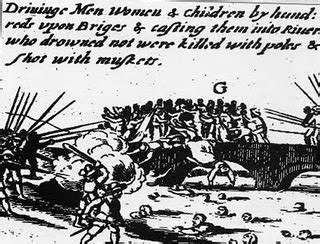
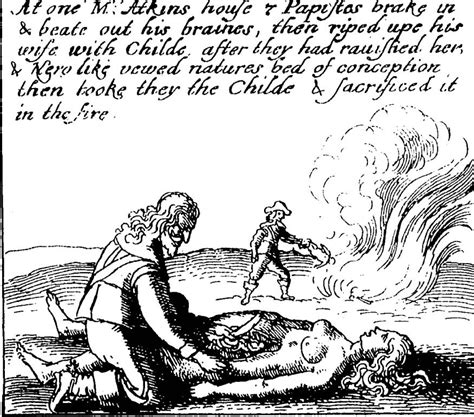
“Precious in the sight of the Lord is the death of His saints.”
Psalm 116:15
Source: The Illustrated Dictionary of World History, by William L. Langer; 1975, Vol. 1, p. 398.
He Said/She Said – September 28, 2021
“It’s difficult to believe that the death [of Pope John Paul I] was natural considering all the creatures of the devil who inhabit the Vatican.”
Abbot Ducaud-Bourget (qtd. by David Yallop, In God’s Name, p. 272)
Pope John Paul I (born Albino Luciani) died on September 28, 1978 after only 33 days into his pontificate.

